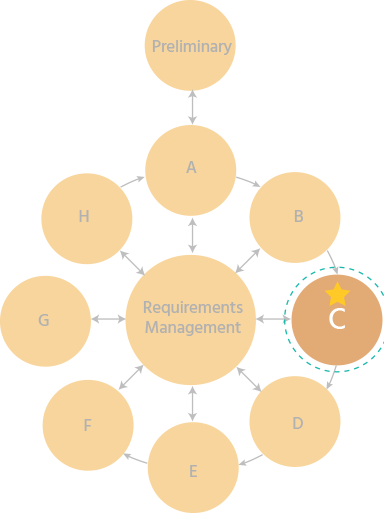Phase C (the Information Systems Architectures) includes the development of Data and Application Architectures.
- When an enterprise has chosen to undertake large-scale architectural transformation, it is important to understand and address data management issues. A structured and comprehensive approach to data management enables the effective use of data to capitalize on its competitive advantages.
- As part of this phase, the architecture team will need to consider what relevant Application Architecture resources are available in the Architecture Repository
- It shows how the IT systems meets the business goals of the enterprise

Objectives
The objectives of the Data Architecture part of Phase C are to:
- Develop the Target Data Architecture that enables the Business Architecture and the Architecture Vision, in a way that addresses the Statement of Architecture Work and stakeholder concerns
- Identify candidate Architecture Roadmap components based upon gaps between the Baseline and Target Data Architectures
Inputs
This section defines the inputs to Phase C (Data Architecture).
Reference Materials External to the Enterprise
Non-Architectural Inputs
Architectural Inputs
Steps
The level of detail addressed in Phase C will depend on the scope and goals of the overall architecture effort.
New data building blocks being introduced as part of this effort will need to be defined in detail during Phase C. Existing data building blocks to be carried over and supported in the target environment may already have been adequately defined in previous architectural work; but, if not, they too will need to be defined in Phase C.
The order of the steps in this phase as well as the time at which they are formally started and completed should be adapted to the situation at hand in accordance with the established Architecture Governance. In particular, determine whether in this situation it is appropriate to conduct Baseline Description or Target Architecture development first .
The steps in Phase C (Data Architecture) are as follows:
- Select Reference Models, Viewpoints, and Tools
- Develop Baseline Data Architecture Description
- Develop Target Data Architecture Description
- Perform Gap Analysis
- Define Candidate Roadmap Components
- Resolve Impacts Across the Architecture Landscape
- Conduct Formal Stakeholder Review
- Finalize the Data Architecture
- Create the Architecture Definition Document
Outputs
The outputs of Phase C (Data Architecture) may include, but are not restricted to:
- Refined and updated versions of the Architecture Vision phase deliverables, where applicable:
- Draft Architecture Definition Document
- Draft Architecture Requirements Specification
- Data Architecture components of an Architecture Roadmap
The outputs may include some or all of the following:
- Catalogs:
- Data Entity/Data Component catalog
- Matrices:
- Data Entity/Business Function matrix
- Application/Data matrix
- Diagrams:
- Conceptual Data diagram
- Logical Data diagram
- Data Dissemination diagram
- Data Security diagram
- Data Migration diagram
- Data Lifecycle diagram